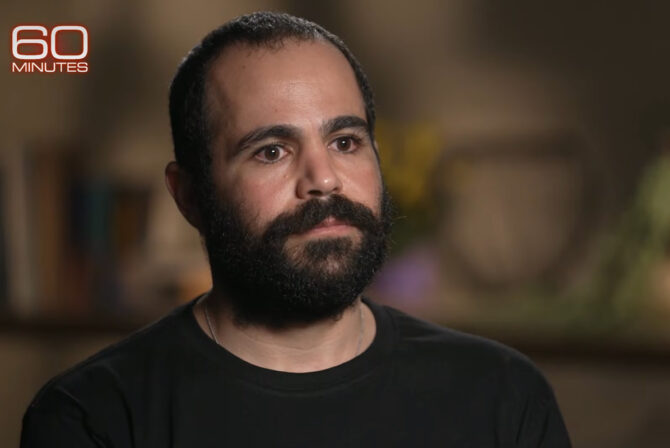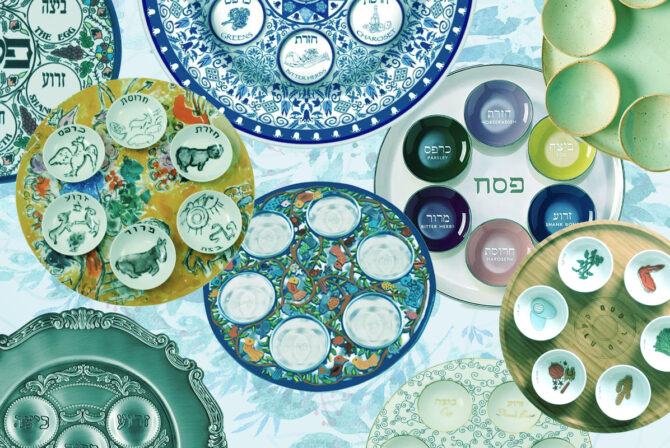On her most recent visit, my mom stepped off the plane with a huge plastic shopping bag, crinkled with age. It didn’t look like much, but inside were sherbet-colored confections redolent with the nostril-tweaking aroma of mothballs. They were sweaters, made by my grandmother starting half a century ago, and now they were here, ready for my daughter to wear.
My mom had four daughters, and her mom, Rosie, knitted for all of us. For Sarah, born in 1958, there was a pink cardigan and matching bonnet. Elizabeth, born two years later, had an orange pullover that she wore horseback riding. It was another six years before I came along, and I remember Rosie asking if I wanted a pom-pom on my hat, and her raucous laughter when I said yes, I wanted a “baw-baw.” In another six years, there was Emily, who treasured a tiny hat with knitted triangles sticking straight up like cat-ears. There are photos of all of us in these hand-crafted fashions, and we each have vivid memories of standing absolutely still as she measured a nearly-finished sleeve against our arms and admonished us to quit growing so fast, so she could keep up.
As we got older and the fashions changed, Rosie’s choices of yarn went from soft pinks to bolder jewel tones, veering off into avocado green and harvest gold in the seventies. As she got even older, her stitches got bigger, and she gave up cable-stitch and fair-isle styles in favor of simpler projects she could finish without picking up her glasses to peer at a dropped stitch, or simply stopping to rest her aching, arthritic fingers. Finally, she stopped knitting altogether; a few years later, she passed away, leaving a basketful of brightly-colored needles in assorted lengths and widths. As I poured over the sweaters my mom had brought to me, I remembered my own knitting debut.
Knitting for Beginners
Just before I got pregnant, when I was still glaring at the stubborn single pink line on the test each month, I also found out my beloved cousin was battling breast cancer. What could I do? Nothing but worry. I was inspired to take a knitting class, so I could at least make her the perfect hat to make her feel warm and loved when she lost her hair.
As I sat in the back of the shop, a warm and bright oasis in a chilly San Francisco evening, I fumbled with the fat knitting needles in my hands, wondering why they didn’t clack satisfyingly like Rosie’s. Why hadn’t I ever asked her to teach me to knit? Why hadn’t I watched more carefully? This was so hard. How come everyone else in the class seemed to take to it so easily?
“Pull, bring the yarn around, pick up the stitch, push down,” Susan, the shop’s owner, directed us, and everyone else seemed to be able to follow along like violinists in a symphony. Only me, the granddaughter of the champion knitter of Sheepshead Bay, Brooklyn–I was the only yarn-challenged one, baffled by instructions, unable to find my way from knit to purl and back again.
Revealing Your Roots
At one point, out of frustration, I hunched my shoulders and leaned forward, hiding my work from everyone else, and started pushing my yarn along in a different way. Rather than wrapping the yarn around the needle as instructed, I found it easier to push it down, picking up the stitch in a more direct way. It felt easier, but that meant it had to be wrong. Yet despite my misgivings, I was soon knitting smoothly along with the rest of the class, and lost myself in the rhythm of a row of stitches that blossomed effortlessly at the tips of my fingers. I forgot that I was doing it wrong–until I felt Susan’s hand on my shoulder.
“Oops,” I thought, looking up guiltily.
But Susan wasn’t looking at me. She was addressing the rest of the class. “Now, everyone, see how Amy’s holding her yarn in her left hand? See the cool way she picks up her stitch? That’s called continental knitting, and it’s harder, but some people like it better.” She turned to me. “Is someone in your family from Eastern Europe or Germany?”
Well, sure. And Russia. Isn’t that part of the Sheepshead Bay connection? But what did that have to do with my knitting style?
“The kind of knitting I teach is English knitting,” Susan said. “But it’s not the only knitting style. If you’re more comfortable knitting the way you were taught as a kid, you go ahead, and I’ll help you. Anyone else want to knit like Amy does?”
Susan moved on, helping the next knitter. I looked down at my hands, stunned, then resumed knitting and watched them with a measure of detachment. Yes, that’s how Rosie’s hands used to move: pushing the yarn with her finger, not stopping to wrap it around the needle. It was smooth, efficient, and it felt right–but how did I know to knit that way?
Culture by Osmosis
By watching. By listening. By being close to my family, and taking in their culture by osmosis. And what else did I take in over the years, I wondered, as I counted stitches and relaxed.
There’s the way I mumble “aw-mayn” instead of “ah-mayn” at the end of prayers, and instinctively pronounce aleph in the old-fashioned way whenever I read Hebrew, because that’s how Grandpa Mike did it, and that’s how I hear the prayers in my head.
There’s my selective kosher blindness, in which I don’t go anywhere near pork products, but shrimp? Shrimp’s somehow fine. And sometimes bacon. But no treyf!
There’s the way I stop my toddler from grabbing my phone by yelling a rat-a-tat “Ah-buh-buh-buh-buh!” The way I respond to my husband’s polite, Midwestern questions with a nasal “hah?” The way I start cooking each meal by chopping onions, even if it doesn’t call for chopping onions, because what kind of meal wouldn’t call for chopped onions? It’s how you start dinner.
It’s in the way tears spring to my eyes even when I know I’m watching something corny–my grandparents were huge fans of Yiddish theater, and used to make fun of the way they tore up the scenery, “but you couldn’t help but cry.”
It’s in the way I mentally check over my shoulder to see if anyone’s listening when I tell my daughters they’re beautiful–because if you admit how blessed you feel, something bad is bound to happen.
It’s in the way I put a bit of thread in my mouth if I’m going to sew something I’m wearing, a funny superstition that my mom had forgotten about until she saw me do it.
Rosie and Mike, Sarah and Max, and all the great-greats lost to history–they’re gone, but they’re in my fingertips, guiding my hands and shaping my faith in ways I don’t even know about. But that’s what faith is: something you can wrap around you like a richly-patterned sweater, woven out of long experience, so you don’t freeze when life gets a little chilly.







